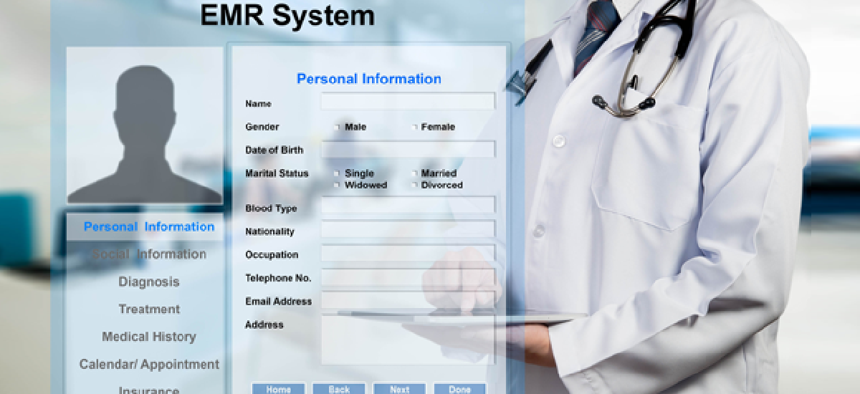Telehealth success depends on integration with electronic health records


Connecting state and local government leaders
In Texas and South Carolina, seamlessly connecting the remote visitation technology to the health records system has solved the workflow problems that had been holding telehealth back.
When the Texas Department of Criminal Justice (TDCJ) started its telemedicine program some 25 years ago, a couple hundred virtual visits between providers and inmates took place. In 2008, that number was 62,535. Next year, it is expected to hit 160,000.
What changed the game for telehealth in the state’s prison system? Electronic health records.
“What really was the catalyst for the growth was finally coupling the telemedicine program with an electronic health record because prior to that time, with paper records, you’d have to fax some of the medical records down to the provider,” said Owen Murray, vice president of offender health services at the University of Texas Medical Branch (UTMB) Correctional Managed Care. “Sometimes they could read it, sometimes they couldn’t. Sometimes they didn’t have what they needed. It was just a much more cumbersome process.”
When EHRs came into use 12 years ago, care providers at the on-site prison clinic and care givers at the prison hospital in Galveston could instantly look at the same material. TDCJ uses its own EHR system and can edit the source code to tweak it to its specifications, Murray said.
“We’ve employed our own programmers to kind of ‘correctionalize’ our EHRs to put in what we need, both for direct patient care at the facilities, but also through telemedicine, so we’ve been able to create our own forms, our own scheduling system -- everything that we need to be able to do our work as it relates our offender patients,” he said.
The challenge now is maintaining enough bandwidth to keep up with all the video and data transmissions. To address that, Murray works with TDCJ and telecommunications providers to create and improve infrastructure. Additionally, all video and data transmissions are made via a secure, private network, he added.
The technology the telehealth program uses is kind of a “smorgasbord,” Murray said, because of the department’s need to contain costs and meet budgets. Outpatient psychiatry, all of which is done via the telemedicine program, requires only that the psychiatrist and prison clinic have monitors to connect for sessions. Primary-care interactions involve more technology because providers must be able to look in ears and mouths, use a stethoscope and examine skin lesions with specialized cameras. The cost of those setups have decreased in recent years to about $7,500 each, he said.
Last year, 140,000 telemedicine visits were conducted -- 45,000 of which were mental health-related and another 45,000 of which were primary care interactions. Murray’s goal is to increase the share of telemedicine-based primary care visits from less than 15 percent today to 75 percent in the next five years.
Without a telehealth program, TDCJ would have to either transport inmates to doctors’ offices or hire more doctors to go to the prisons -- neither of which is simple, Murray said. “Where some of these facilities are located, there’s no psychiatrist in a 100-mile radius, so how do we get someone to go there? It was always a struggle trying to figure out solutions,” he said.
He’s offered an extra $40,000 per year in pay to attract doctors to rural prisons and turned to agencies to provide physicians, but that costs considerably more than a telemedicine encounter, Murray said. “Just on the provider end, it saves the state $2.5 million every year with us not having to use agency physicians,” he said.
Texas is not the only state using EHRs to power telemedicine programs. The Medical University of South Carolina tied video-based visits to its EHR platform and found that integration was key to making sure that videoconferencing with patients doesn’t disrupt providers’ workflow.
“Care lives in the EHR now,” James T. McElligott, medical director for telehealth at the university, told mHealth Intelligence in June. The university recently started a virtual care solution that connects to the health system’s Epic EHR platform, letting patients initiate virtual visits through the patient portal.
A 2014 Utah telehealth study found that telehealth adoption is closely tied to increasing use of EHRs. “Increased standardization and interoperability will pave the way toward the integration of telemedicine with EHRs,” Stewart Ferguson, CIO of the Alaska Native Tribal Health Consortium, was quoted as saying. “Ferguson foresees that in the not-too-distant future, an EHR system will be the platform on which telemedicine services run,” the report said.




